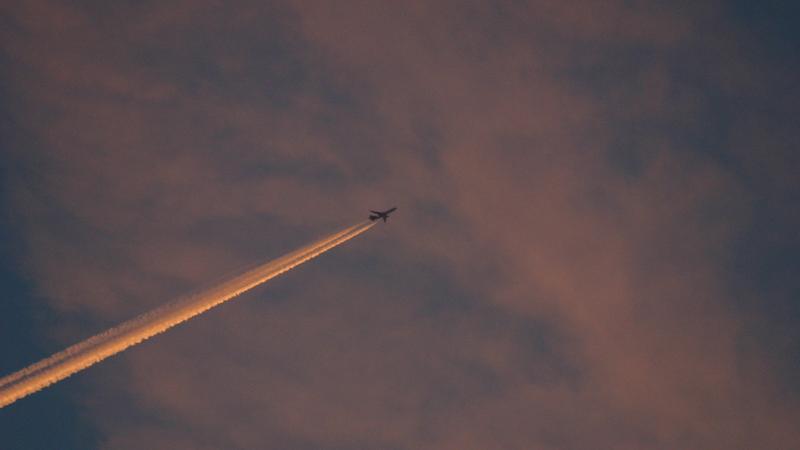Safety drives aviation but time is running out to fit ADS-B to a multitude of aircraft.
Automatic Dependent Surveillance-Broadcast (ADS-B) is a mandated technology that is set to transform the global tracking infrastructure for aviation. The technology introduces a variety of new capabilities for Air Navigation Service Providers (ANSP), pilots and aircraft operators.
The deadline for ADS-B has long been set as January 2020 for the United States and July 2020 for Europe. Despite this, towards the end of last year, the FAA estimated that more than 100,000 aeroplanes still need to be equipped with ADS-B technology.
This is a worrying statistic for owners and operators when we consider that those who do not implement ADS-B by the mandate risk being prevented from flying in the United States and European airspace in 2020.
With the ADS-B deadline looming close, we take a deeper look at the mandate; why aircraft operators must implement it before the deadline and how it will help make air travel safer for everyone.
What is ADS-B?
ADS-B is a surveillance technology that brings improved safety and efficiency to pilots, air traffic controllers and, ultimately, travellers.
ADS-B is, fundamentally, a transponder identifier, meaning it shares the aircraft tail number so that air traffic control teams and ground services can locate an aircraft while it is flying.
ADS-B alters the way air traffic controllers monitor and track aircraft. It relies on aircraft avionics, a constellation of GPS satellites, and a network of ground stations across the country to broadcast an aircraft’s position, ground speed, and other data to air traffic controllers in real-time.
Why is ADS-B important?
Traditionally, most air traffic control radar systems have used either Primary Surveillance Radars (PSR) or Secondary Surveillance Radars (SSRs). The first transmits electromagnetic pulses and detects echoes to identify targets in a surveillance area.

The second transmits coded messages and receives replies from transponder-equipped aircraft. The data from both of these systems is usually combined via an automated system that generates a picture of the airspace for controllers so that they can ensure safe landings and aircraft distance.
However, these technologies have their shortcomings. For example, PSRs can mistake aeroplanes for migratory birds or other radar clutter.
PSRs transmissions also become weaker and less reliable with range, making tracking over long distances difficult and requiring pilots to make more radio hand-offs with air traffic controllers.
Furthermore, the older radar technology can often be slow and take three sweeps of the radar to determine if an aircraft has changed heading when it is 100 miles out. Antiquated radar systems can make tracking aircraft a hard task due to poor levels of accuracy and dependability.
This is what makes ADS-B technology important, it provides real-time tracking for aircraft, which increases situational awareness for pilots and improves efficiency and location-tracking for air traffic controllers.
With ADS-B, air traffic controllers and pilots have a more precise and accurate picture of aircraft positioning and speed, which allows air traffic controllers to better manage aircraft spacing and routing; and helps pilots avoid potentially deadly collisions.
Lastly, ADS-B surveillance is also easier and less expensive for government agencies to operate than ground radar. Combined, all these factors make ADS-B upgrades smart and appealing for, operators, owners and government agencies alike.
What needs to be done?
If an operator has not already upgraded their aircraft with ADS-B technology, it is important that they sign-up by July of this year to avoid any last-minute rush.
Operators who do wait will likely face higher installation costs, scheduling challenges and even run the risk of not having ADS-B installed in time, meaning their plane would be grounded.
Some operators have already taken action to get ahead of the deadline, for example, Netherlands-based private jet services company, EXXAERO, installed ADS-B last year. The company felt that it was too risky to leave upgrading to ADS-B to near the deadline, as there are so many aeroplanes that still need the upgrade.
Another aspect operators must bear in mind is that it generally takes two weeks of downtime to retrofit and test an aircraft after installation. Operators should review their flight calendar and/or maintenance logs early to identify windows of opportunity.
Furthermore, ADS-B is not a one-size-fits-all solution and operators may need several additional components as part of the upgrade package. These components may include additional transponders, GPS, radio and communications systems, as well as other supporting component parts and software.
Ultimately, with the ADS-B deadline fast approaching, airline operators who have not already acted should prioritize upgrading their aircraft quickly to be ADS-B compliant and avoid missing the deadline.
Doing so is not only imperative to being able to fly in European and American airspace next year, but will bring several safety and efficiency benefits, too.
Visit faa.gov/nextgen/programs/adsb/ for more information.


